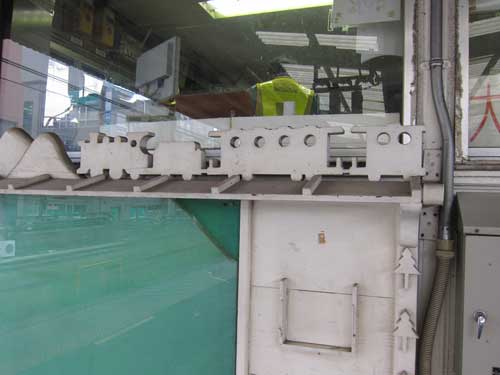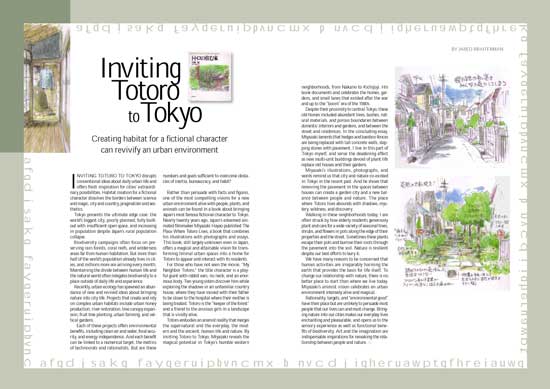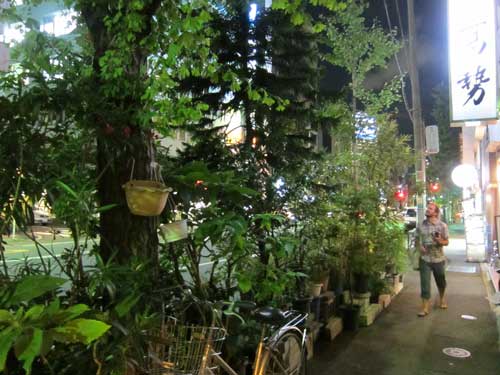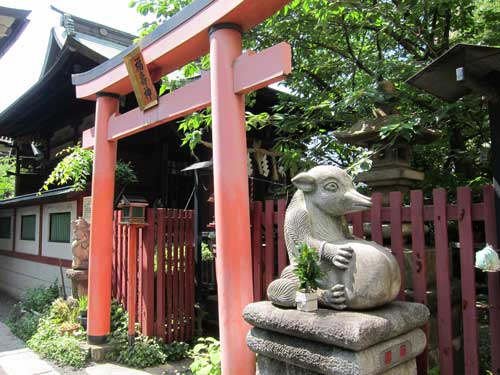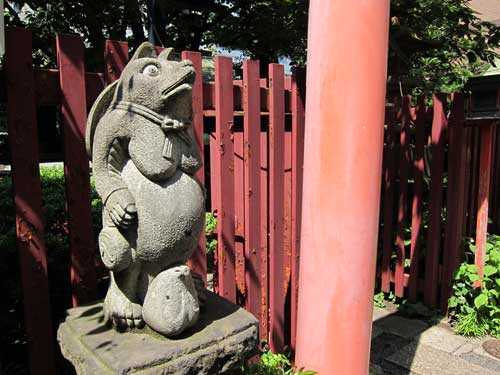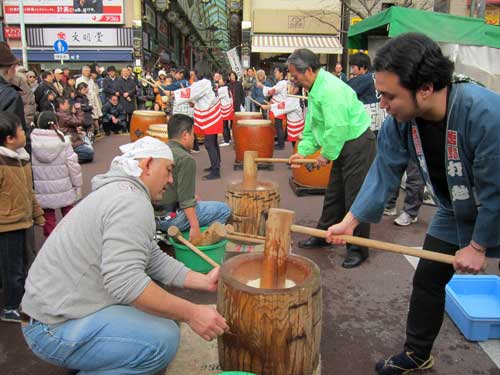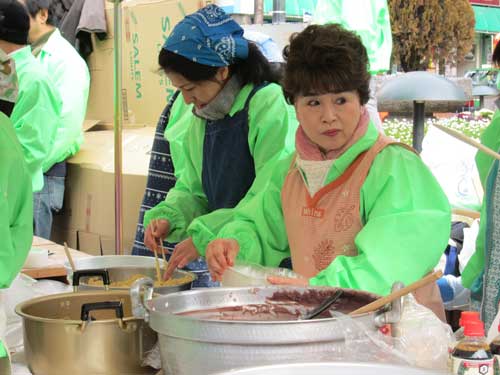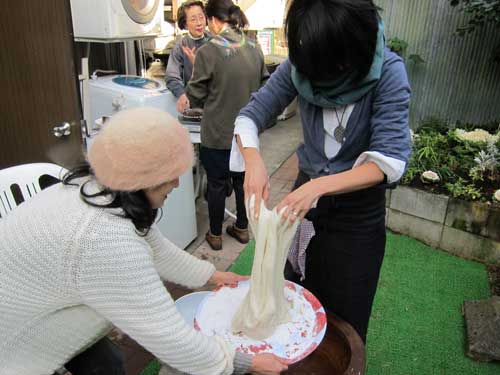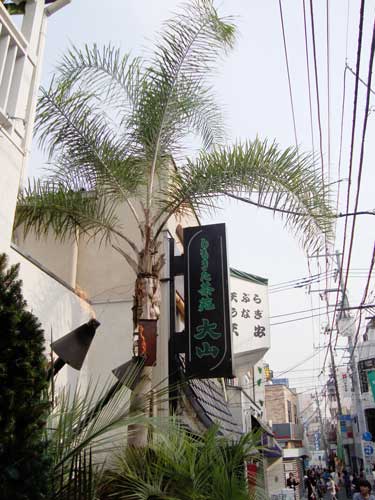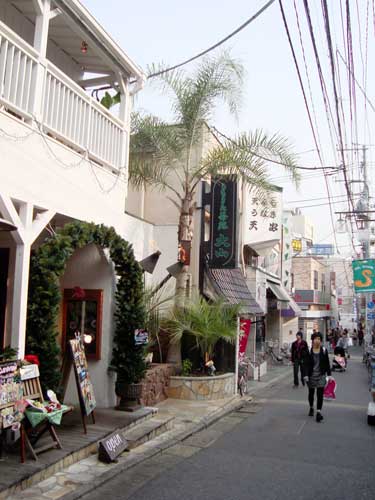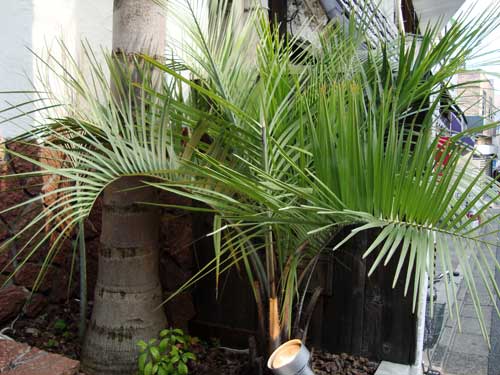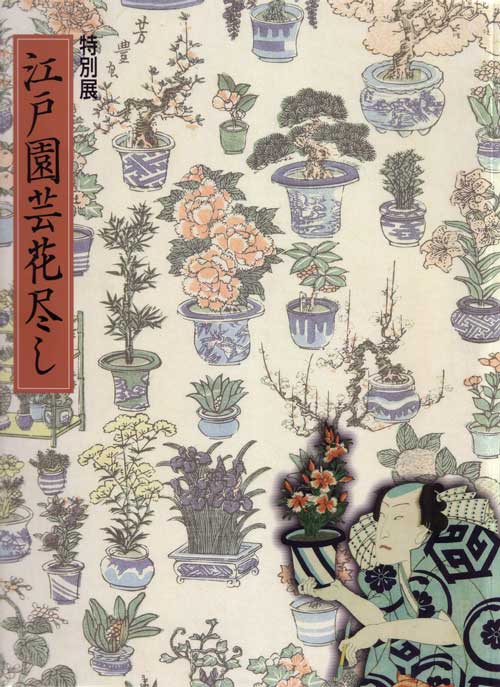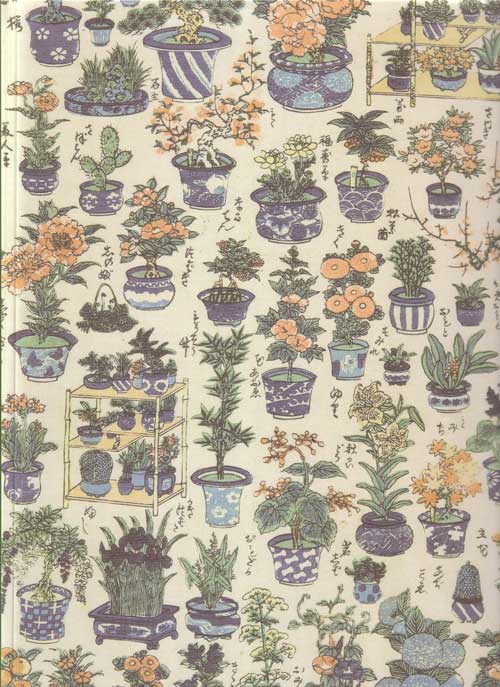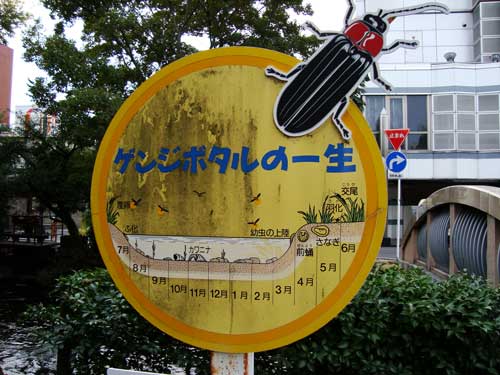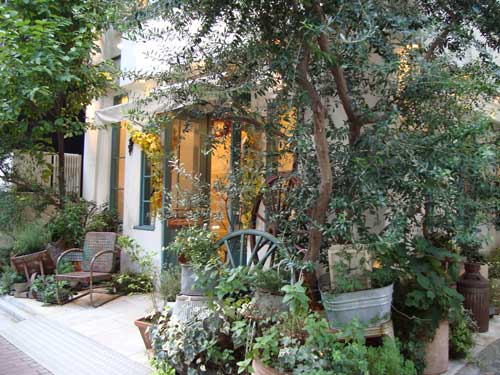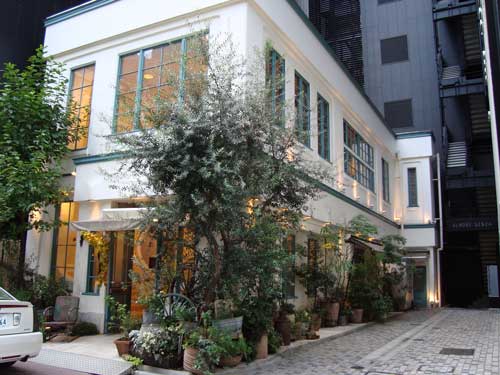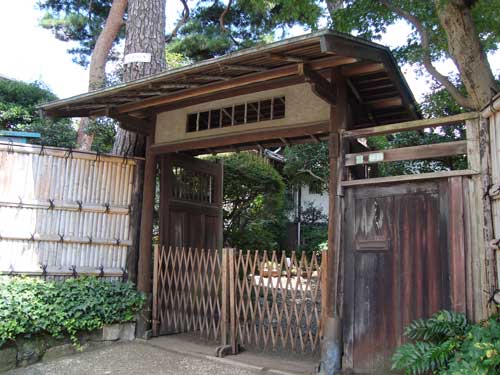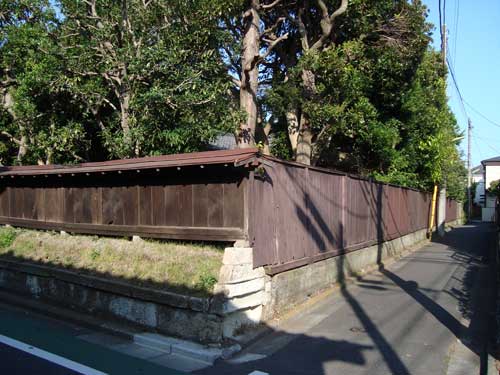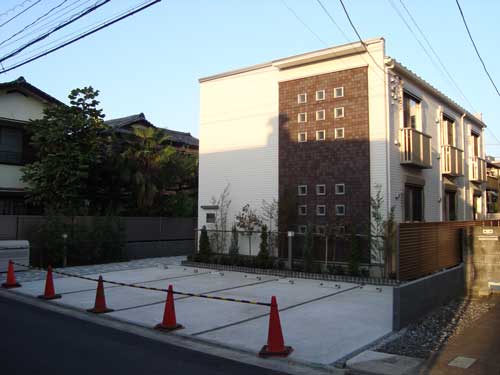
A miniature fantasy landscape freely shared on a Tokyo curbside.
ミニチュアのファンタジー風景が舗道 の縁石を占領している。
This tiny curbside garden is a fantasy landscape in miniature in what was probably dead space previously between the house and the road. There’s moving water, a palm tree, plants, and several odd characters. I found it just across the road from the giant tree on that former country lane that is now barely visible in Suginami, not far from Opera City.
The contents are fun in their whimsical incongruity. Even in this tiny space, there are several overlapping vignettes. A tiny palm tree joined by a sliver bunny and a character that appears to be a cross between European Romanticism and anime; several Sago palms (Cycas revoluta) beneath some mid-height bushes; and the fountain with water plants and a character trio with a helmeted princess, a red Cobra super-hero whose left arm is a semi-automatic weapon, and an over-sized yellow dog. The fountain features plants, a tiny cliff-side, and bathtub ducks.
The garden structure is very DIY: low-cost, anonymously designed, and highly imaginative. I love that the gardener is sharing this creation with the neighbors and passers-by. The garden’s minimal foundation is constructed mostly of low-lying brick with some wood fencing. I particularly like the tag that shows the flowers that will bloom later.
Thanks again to @ArchitourTokyo for the great bike tour where we discovered this sculpture garden.








